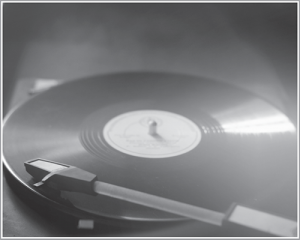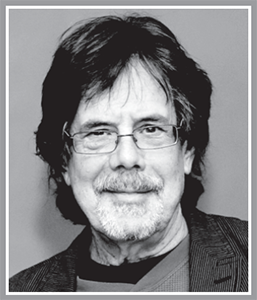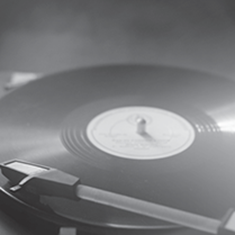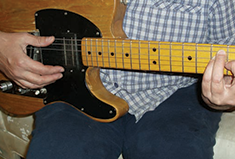Make It Happen Now!
By Peter Werbe
THOSE PEOPLE BURNED OUT ON 1960S NOSTALGIA can take comfort in the fact that this year marks the end of the 50-year anniversary of the tumultuous events of that fabled decade. Being awash in history of a half-century previous is mostly a function of media focus on those long-ago events.
 People in 1969 weren’t harkening back to recognize what happened in 1919 even though that year was filled with labor militancy including a general strike in Seattle, lynchings and murderous white assaults on black communities, the deportation of radicals, and even the Boston Molasses Disaster that killed 21 people and injured 150.
People in 1969 weren’t harkening back to recognize what happened in 1919 even though that year was filled with labor militancy including a general strike in Seattle, lynchings and murderous white assaults on black communities, the deportation of radicals, and even the Boston Molasses Disaster that killed 21 people and injured 150.
But with media now truly mass and ubiquitous, a recognition of each day’s event in history is content for our habituation to news sites.
So, permit me one last comment on the year, but with what I hope speaks to today.
IN AUGUST OF 1969, THE STOOGES, FRONTED BY IGGY STOOGE, now Iggy Pop, released their eponymously-titled first LP containing their hit song named for the year at hand. It sang a simple rhyming doggerel projecting a sense of profound boredom and youthful angst.
Here are the relevant lyrics:
“Well, it’s 1969 okay all across the USA. It’s another year for me and you; Another year with nothing to do. Last year I was 21. I didn’t have a lot of fun.”
“No Fun” was another song on the album. The lyrics don’t exactly rise to the level of those being written at the time by Bob Dylan or Leonard Cohen, but the studied ennui combined with a hard rhythmic beat actually provided a lot of fun and something to do for those young people who bought The Stooges record and heard them play live “all across the USA.”
In reality, Iggy was having a ball, as well, headlining concerts at Detroit’s fabled Grande Ballroom or opening there for some of the biggest rock acts of the era. Plus, when Iggy, now described as the Godfather of Punk, went outside of the rock venues, the streets were filled, like 50 years before that, with strikes, anti-war and black power demonstrations, feminist and gay demands, cultural experimentations in film, music, poetry, and theater, riots and rebellions — a world in the midst of extensive change in attitudes and politics. And that was just in Detroit!
Just one issue of the paper from that era that I work with today, the Fifth Estate, gives a picture that something was happening here, and contrary to what Buffalo Springfield sang, what it is, was very clear. See FifthEstate.org site for the stories in the May 1969 edition.
BUT THAT ALL SAID, THERE OFTEN IS THE SENSE IN ANY CONTEMPORARY ERA that things were much more exciting and interesting in a previous period. That’s the theme of Woody Allen’s 2011 fantasy comedy film, Midnight in Paris. The central character, played by Owen Wilson, is visiting the French capital in advance of a marriage of which he is growing increasingly unsure.
Out walking alone one midnight, he is mysteriously transported back to 1920s Paris where he is swept into the wild cultural scene of F. Scott Fitzgerald, Ernest Hemmingway, Josephine Baker, Pablo Picasso, Salvador Dalí, Cole Porter, Paul Gauguin, and many more. For the film’s time traveler, this is amazing and exciting beyond anything he can imagine (and is he, or is it real?). This is the era in which he wishes he had lived; not the dull 21st Century.
Spoiler alert: The twist at the end of the film comes when he and a woman with whom he is infatuated are transported from 1920s back to the Belle Époque (Beautiful Age) at the end of the 19th Century where his companion wishes she lived rather than the 1920s, stunning the Wilson character.
The message? Almost a corny one. Appreciate where you are at the moment and make that come alive with adventure and purpose.
SURE, SOME ERAS SEEM MORE IMPORTANT OR INTERESTING THAN OTHERS, and probably were. But, what decade seems the dullest and most repressive in the last 150 years? The 1950s with its demand for political and cultural conformity typified by TV shows like “Father Knows Best,” singers like Perry Como and Pat Boone, and a Red Scare enforcing repressive politics.
What that was all about was the mainstream control apparatus in the media and government trying to keep the lid on things because right below the surface, things were boiling.
Rather than “nothing to do,” in the 1950s, there were intense battles for civil rights. School integration strife, and the Montgomery Bus Boycott were announcing the end of Jim Crow laws. Rock and roll was pouring forth from the black musicians who originally created it and white kids had their radios tuned, often in stealth, to stations playing the so-called “race music.” Rock and roll riots broke out at concerts all across the country. Thelonious Monk, Miles Davis, Dave Brubeck, and other jazz musicians were doing some of their most creative work. And, Beat movement writers like Allen Ginsburg, Jack Kerouac, and William Burroughs were not only knocking down literary traditions and inventing new forms, their work contained strident critiques of what Henry Miller had called a few years before, “The Air-Conditioned Nightmare” — American society.
The 1950s official clampdown only momentarily held back the tidal wave of change that racked the nation in the next decade.
So, my message? Same as the Woody Allen film. Make it happen right where you are right now. Guaranteed that you will have something to do.
 Peter Werbe is an editor of the Fifth Estate magazine, now in its 54th year of publishing from Detroit. www.FifthEstate.org.
Peter Werbe is an editor of the Fifth Estate magazine, now in its 54th year of publishing from Detroit. www.FifthEstate.org.




